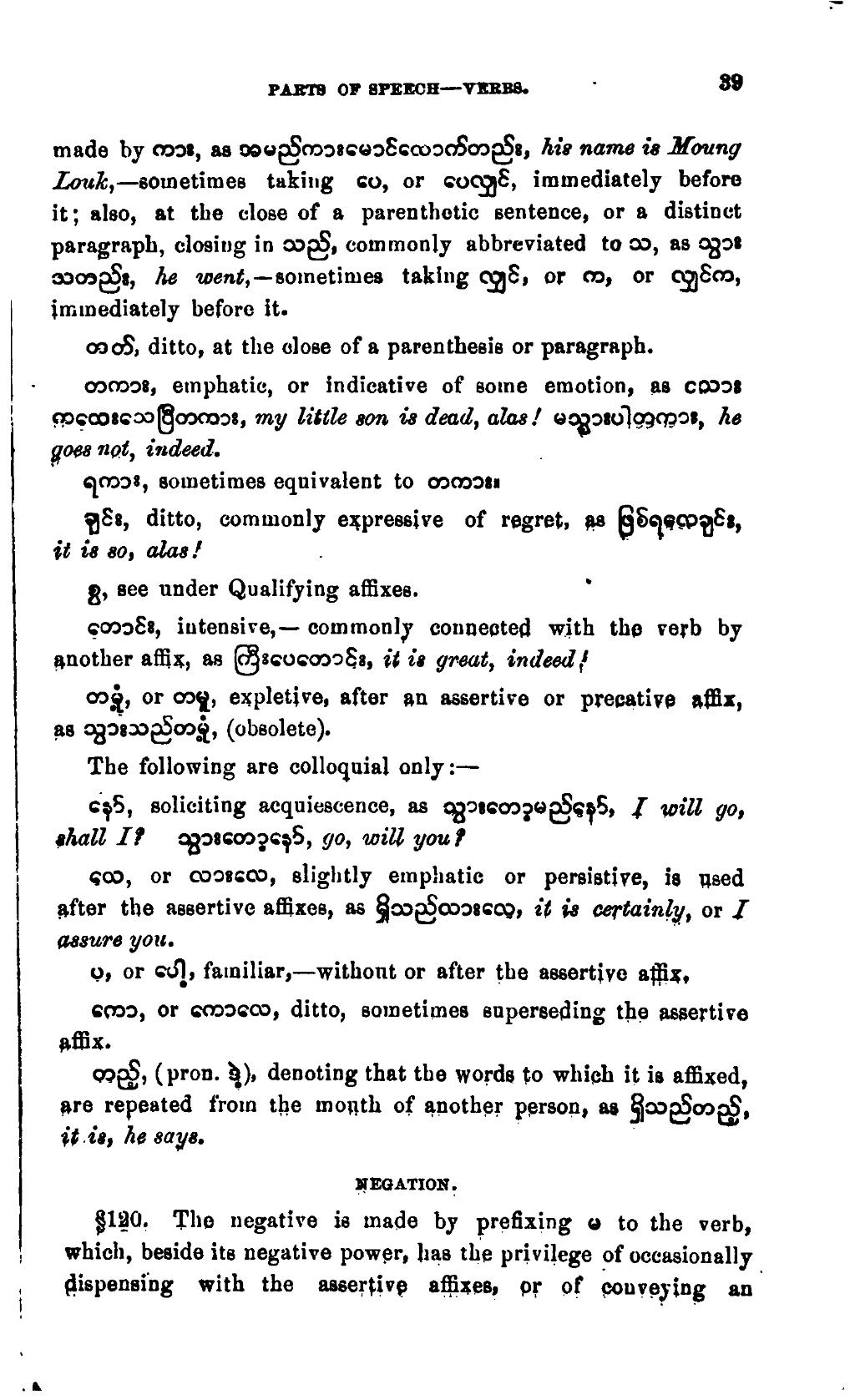made by ကား, as အမည်ကားမောင်လောက်တည်း, his name is Moung Louk,—sometimes taking ပေ, or ပေလျှင်, immediately before it; also, at the close of a parenthetic sentence, or a distinct paragraph, closing in သည်, commonly abbreviated to သ, as သွားသတည်း, he went,—sometimes taking လျှင်, or က, or လျှင်က, immediately before it.
တတ်, ditto, at the close of a parenthesis or paragraph.
တကား, emphatic, or indicative of some emotion, as သေားကလေးသေပြီတကား, my little son is dead, alas! မသွားပါတကား, he goes not, indeed.
ရကား, sometimes equivalent to တကား.
ချင်း, ditto, commonly expressive of regret, as ဖြစ်ရလေချင်း, it is so, alas!
စွ, see under Qualifying affixes.
တောင်း, intensive,—commonly connected with the verb by another affix, as ကြီးပေတောင်း, it is great, indeed!
တမုံ့, or တမူ, expletive, after an assertive or precative affix, သွားသည်တမုံ့, (obsolete).
The following are colloquial only:—
နော်, soliciting acquiescence, as သွားတော့မည်နော်, I will go, shall I? သွားတော့နော်, go, will you?
လေ, or လားလေ, slightly emphatic or persistive, is used after the assertive affixes, as ရှိသည်လားလေ, it is certainly, or I assure you.
ပ, or ပေါ့, familiar,—without or after the assertive affix.
ကော, or ကောလေ, ditto, sometimes superseding the assertive affix.
တည့်, (pron. ဒဲ့), denoting that the words to which it is affixed, are repeated from the mouth of another person, as ရှိသည်တည့်, it is, he says.
negation.
§120. The negative is made by prefixing မ to the verb, which, beside its negative power, has the privilege of occasionally dispensing with the assertive affixes, or of conveying an
